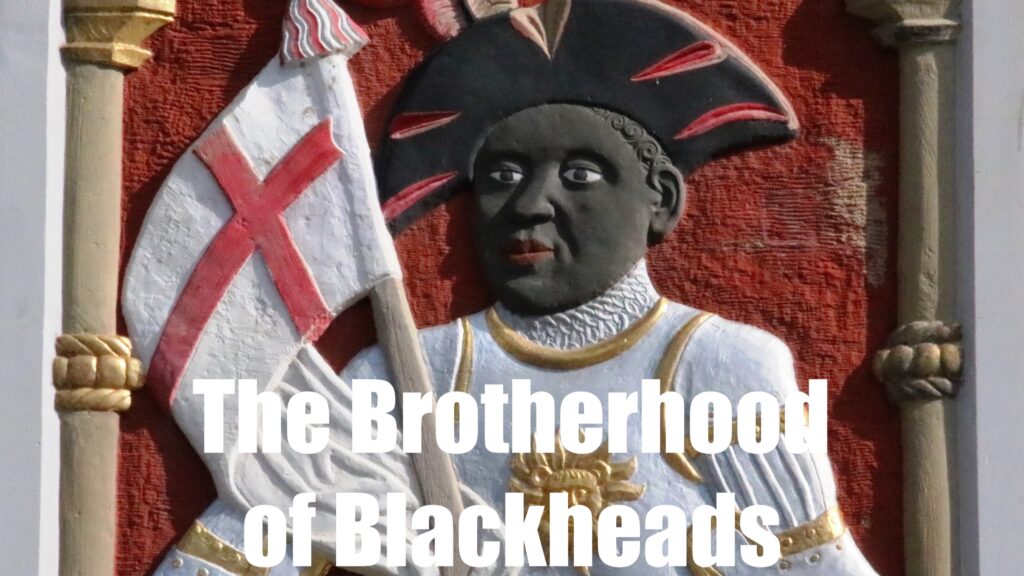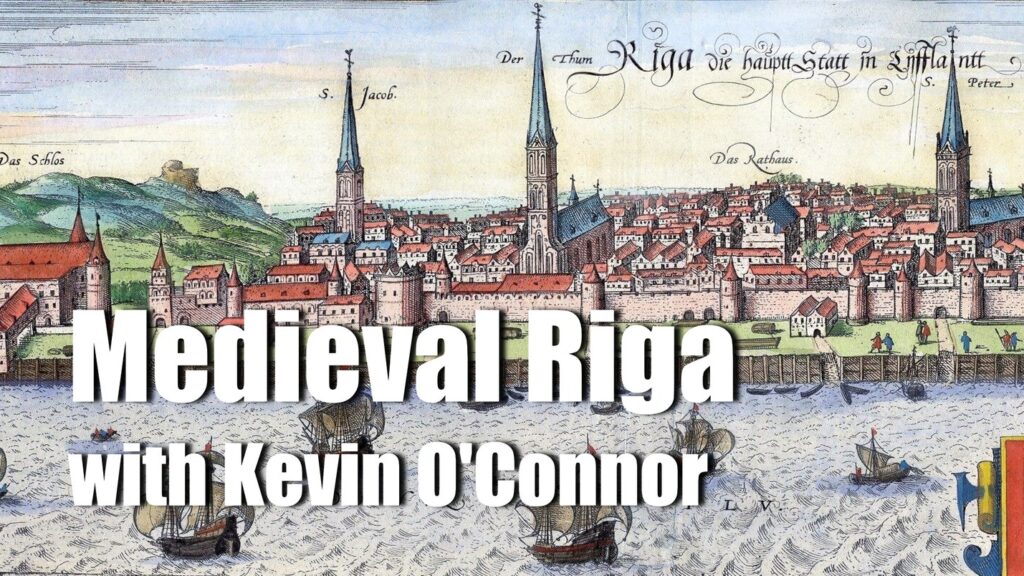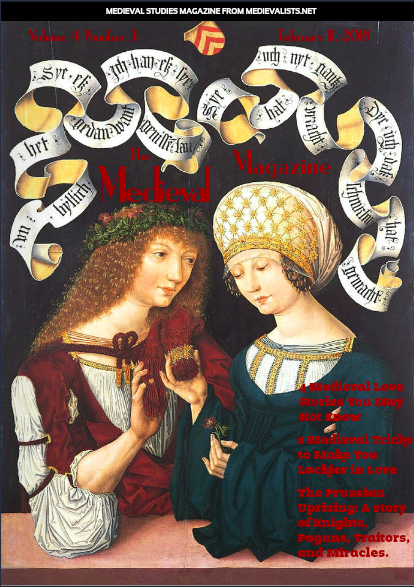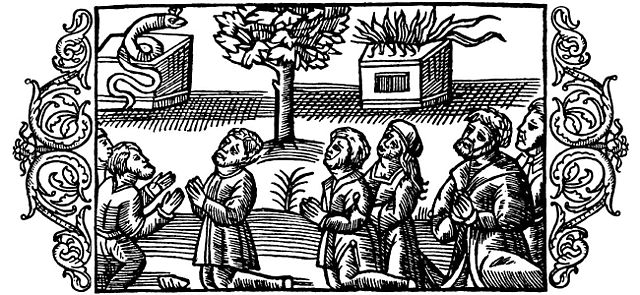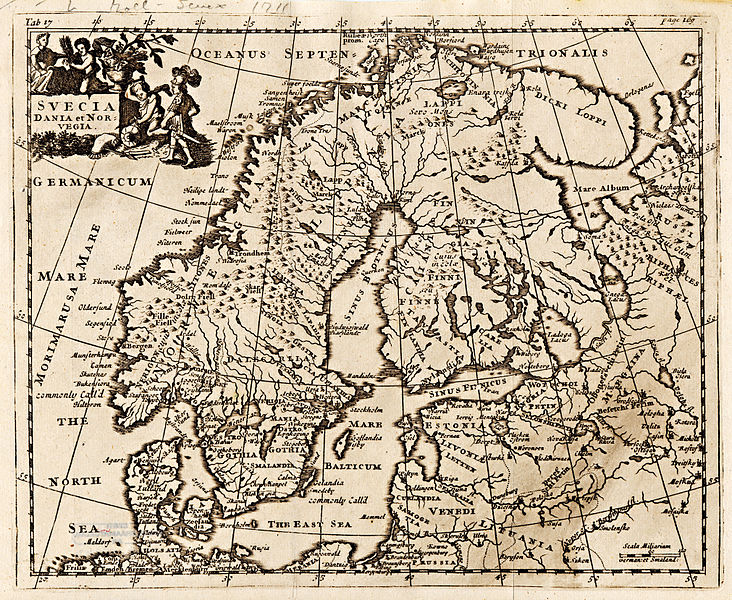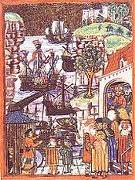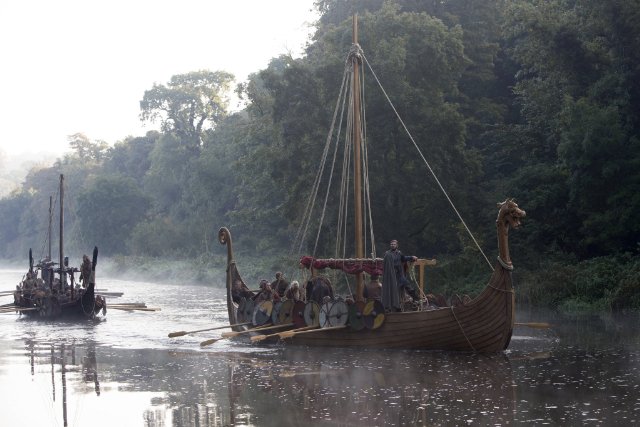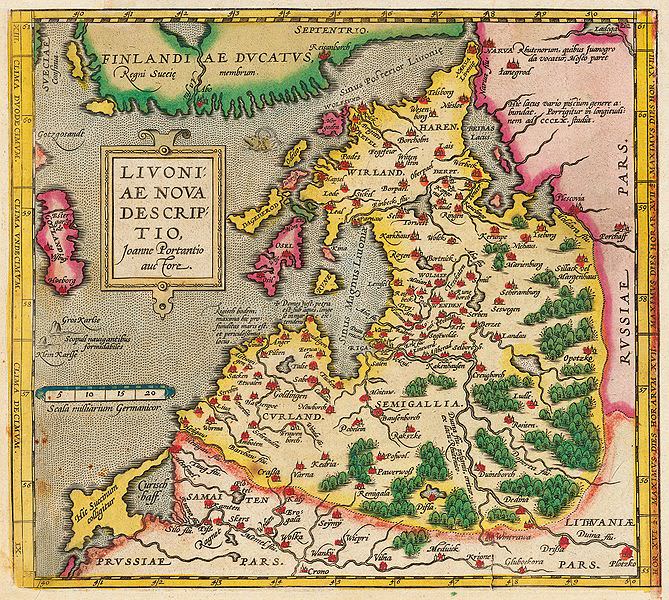The Brotherhood of Blackheads: A Unique Medieval Club
The Brotherhood of Blackheads, named after their patron saint, Saint Maurice, was a unique medieval organisation that combined trade, military service, and elaborate social traditions in the Hanseatic world.
New Medieval Books: The Teutonic Knights
The Teutonic Knights, a prominent military order, were active primarily in the Baltic region but also played a significant role in the Near East and Transylvania. This book explores their origins, rise to regional dominance, and eventual decline.
Medieval Treasures of Lithuania Unearthed in Vilnius Cathedral
A cache of medieval royal regalia, hidden for over 80 years, has been uncovered in Vilnius Cathedral, revealing the splendour of the Polish-Lithuanian Commonwealth.
Medieval Riga with Kevin O’Connor – The Medieval Podcast, Episode 263
This week on The Medieval Podcast, Danièle speaks with Kevin O’Connor about medieval Riga, its tumultuous place as a trading post between West and East – as well as war between bishops and crusaders – and how its medieval history plays out in today’s politics.
New Medieval Books: The House of Hemp and Butter
Detailing the medieval and early modern history of Riga, now the capital city of Latvia. Founded in the twelfth century, the city’s story is one where Germans and other Western Europeans came into contact with the peoples of the Baltic – whether it be in war, trade or religion.
Viking Age Horses Crossed Baltic Sea for Sacrificial Rituals, New Study Reveals
Horses crossed the Baltic Sea in ships during the Late Viking Age and were sacrificed for funeral rituals, according to research from Cardiff University.
New Medieval Books: The Utrecht Chronicle of the Teutonic Order
A chronicle written in the second half of the 15th century, which details the history of the Teutonic Knights, a military order that fought in the Near East and Baltic regions. The account came at a time when the order was in decline, but offers insights into how they viewed themselves and their mission.
New Medieval Books: Pagans in the Early Modern Baltic
A collection of ten texts, in Latin with English translation, from the 15th and 16th centuries, which relate pre-Christian religious practices in the Baltics.
Crusading in the Baltic with the Teutonic Knights
What did Baltic crusaders feel when fighting on the battlefield? Or, more precisely, what were they supposed to feel, according to chroniclers? In this episode of the Medieval Grad Podcast, Lucie talks with Patrick Eickman, who studies the Baltic crusades through the fascinating lens of the history of emotions.
16th century inscription found at Cēsis Castle
A unique inscription dating back to the second half of the 16th century was found on a stone in the South Tower of Cēsis Castle – uncovered during an inspecting of a set of winding stairs which had been inaccessible for centuries.
Restoration of St James’s Cathedral in Riga to completed for 800th anniversary
One of Latvia’s largest banks will be funding the final stages of the restoration of St James’s Cathedral in Riga’s Old Town. The work is planned to be completed by the 800th anniversary of the church in 2025.
Survival at the frontier of Holy War: political expansion, crusading, commerce and the medieval colonizing settlement at Biała Gora, North Poland
In the southern Baltic, episodes of colonisation were accompanied by processes of military conquest, political subjugation and religious conversion.
The Medieval Magazine: (Volume 4: No. 3): Issue 105: Valentine’s Day
The Valentine’s Issue!: Love in the Middle Ages, Teutonic Knights, Tudor medicine, and much, much more!
Holy War – Holy Wrath: Baltic Wars between regulated Warfare and Total Annihilation around 1200
The Baltic crusades of the twelfth and thirteenth centuries were in principle aimed at converting infidels and establishing a new Christian plantation in the wilderness, but the contemporary narrative sources repeatedly tell of crusaders systematically chasing down pagans and annihilating them with the sword.
Western Balts in the 10/11th – first half of the 13th centuries: After the Vikings and just before the Crusades
The questions of trans-regional contacts in the area of South-Eastern Baltic, comparative analysis of the statistical data of the Western Balts ornaments, arms, horse harness, ceramics, different tools and imported goods with some general features of burial rite, cemeteries based on social structure, contact zones and trade routes are described in the study.
Inventing Livonia: The Name and Fame of a New Christian Colony on the Medieval Baltic Frontier
The thirteenth century witnessed the emergence of a new region – Livonia – on the mental map of Latin Christendom.
Which Baltic God/Goddess Are You?
Have you ever wondered who were/are the last pagans in Europe? Baltic Gods were never forgotten. Lithuanians have so many however who from the main ones do you resemble the most – Perkūnas, Žemyna, Vėlinas, Ragutis, Milda or Laima?
Environmental Crusading: The Teutonic Knight’s Impact After the Baltic Crusades
Environmental archaeologist and Professor of Archeology at Reading, Dr. Aleks Pluskowski, examined Malbork and several other sites across Eastern and Northern Europe in his recent paper, The Ecology of Crusading: The Environmental Impact of Holy War, Colonisation, and Religious Conversion in the Medieval Baltic. Pluskowski is keenly interested in the impact the Teutonic Knights and Christian colonisation had on the region. His ambitious 4 year project on the ecological changes in this area recently came to a close at the end of 2014.
Disputing Identity, Territoriality, and Sovereignty: The Place of Pomerania in the Social Memory of the Kingdom of Poland and the Teutonic Ordensstaat
This dissertation analyzes state-formation, the development of historical consciousness, and the construction of identities in medieval Europe.
The Sword Brothers at War: Observations on the Military Activity of the Knighthood of Christ in the Conquest of Livonia and Estonia (1203–1227)
The Knighthood of Christ of Livonia (Militia Christi de Livonia) was the first of the medieval military religious orders to be founded for service outside the Holy Land and Iberia, and thus the first one to be actively involved in warfare anywhere in northern Europe.
The Baltic Frontier: Why were there no Norwegian crusades in the Baltic?
In this paper I will focus on some of the reasons why Norwegian interests in the 12th and 13th century differed from that of the other Scandinavian and German ambitions in the Baltic region.
England’s First Attempt to Break the Commercial Monopoly of the Hanseatic League, 1377-1380
During the second half of the fourteenth century English traders first seriously threatened the Hanseatic League’s commercial monopoly in the Baltic. The League, attempting to defendits monopoly, treated the English unjustly,where upon in 1377 the English Parliament rescinded the charter that granted the League important concessions and privileges in its English trade.
Navegación y embarcaciones en la época vikinga: diferentes fuentes para su estudio (Shipping and navigation in the Viking Age: different sources for study)
This article (in Spanish) is about Viking shipping and navigation.
Estonian small towns in the Middle Ages: archaeology and the history of urban defense
The purpose of the current article is to summarize the material gathered from the excavations of the medieval town walls from the Estonian towns of Viljandi, Haapsalu, and Narva, to discuss when they were erected, and to analyze what their place was in Old Livonian and Baltic contexts.
Island Words, Island Worlds: The Origins and Meanings of Words for ‘Islands’ in North-West Europe
This paper proposes the notion that words mirror ideas, perspectives and world- views. Etymologies and meanings of general words for ‘islands’ in a number of languages in North and West Europe are then discussed.
